
SilencerCo introduced the Salvo 12 — the “world’s first shotgun silencer” — nearly two-and-a-half years ago. I’ve shot one a few times, but never had quality trigger time beyond a few pot shots on a flat range. Thanks to the team at Capitol Armory and a long-term loaner from Stoeger, I’ve been able to give a Salvo a shakedown. First a look at its design and manufacturing . . .

Backyard scientists who’ve cut into a shotgun shell will no doubt know they’re actually quite complex. Part of this complexity is embodied by a rather convoluted plastic wad. The wad does quite a bit. One of the things it does best is get the hell out of the way once the package leaves the barrel. This is a problem for a silencer.
To alleviate the problem of wad discombobulation, SilencerCo uses a series of parallel rods that act as a barrel extension to keep the wad in place, cupping the shot until it emerges. The next consideration: how you go about getting the Salvo to hang off the end of your chosen shotgun.
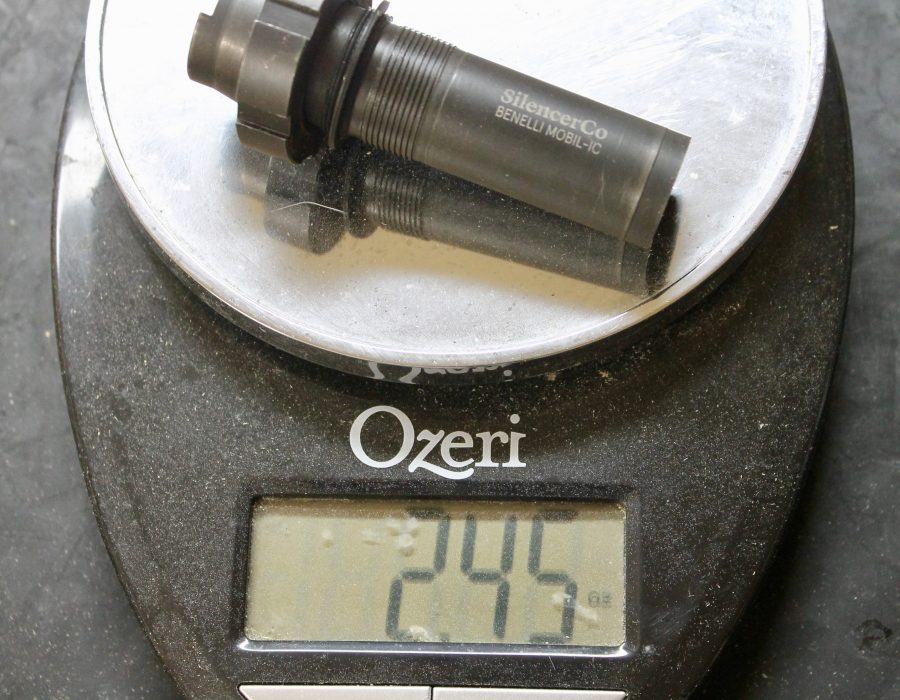
With a rifle, you simply thread the the outside of the barrel to your desired size and pitch and go to town. In a shotgun, the only threads are inside the barrel, making the existing choke system your mounting system. And that’s how SilencerCo rolls. To launch a Salvo, you purchase the choke of your choosing (IC, IM, Modified, Full), thread it in place, and mount your suppressor using the included wrench.
Retail price on the choke adapter is $124. Capitol Armory lists the IC choke you see above at $90 and a three-pack of the IM, Modified, and Full for $220. Those prices are contingent on buying a Salvo. Independently, they’re a touch more. As a point of reference, factory Benelli chokes run $30. A nice Briley will set you back $50. So the SilencerCo models represent a significant upcharge. Then again, you can’t hang a silencer off a Briley.
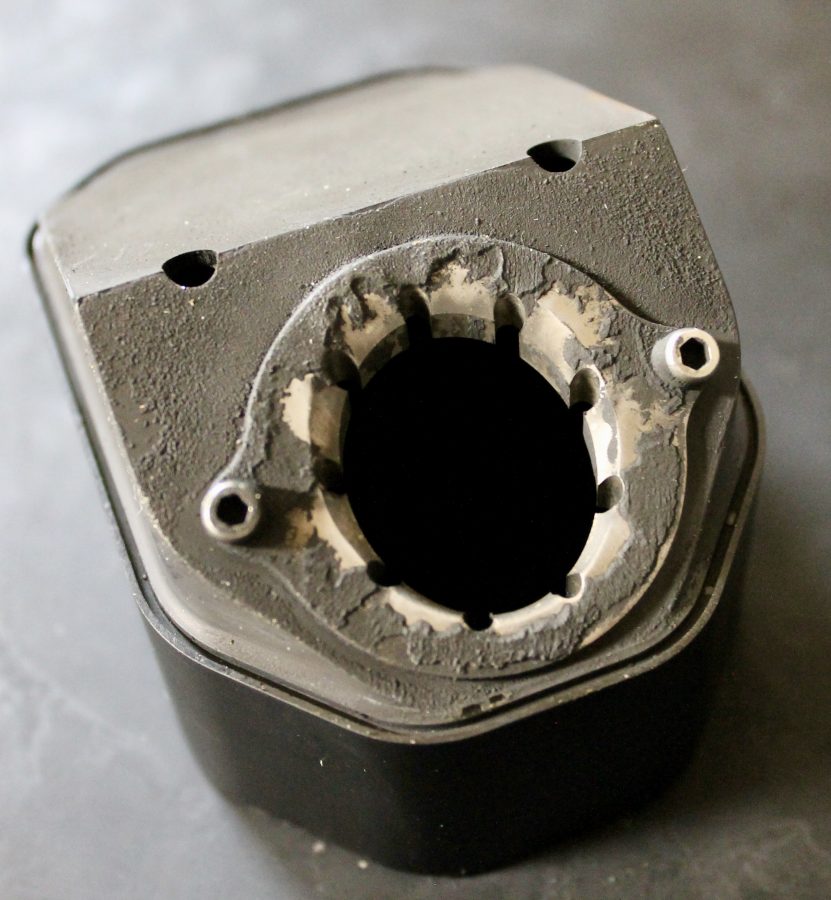
The Salvo is designed to be broken down into its component parts for cleaning. And clean it you must; shotgun shooting is a dirty business. The baffle above is the result of a few minutes of scrubbing with a wire brush and some liberal application of carbon remover. This particular silencer was the one that was screwed to the end of the Remington 870 that Capitol ran at the Texas Firearms Festival. The teams says that it consumer many thousands of rounds through the weekend. SilencerCo suggests a cleaning schedule closer to every 1500 rounds.
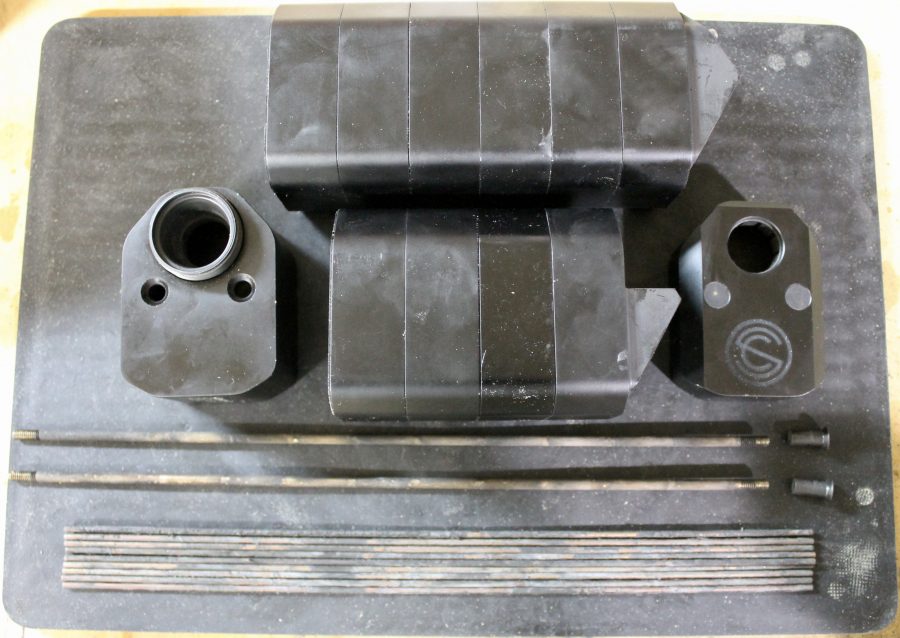
Above is the entire baffle stack for the Salvo. The manual calls the six baffles up top (full baffles) and the four baffles in the middle (half baffles). In the photo above, they’re bracketed by the back cap and end cap. Below that, you’ll notice two threaded rods, their end caps, and then a slew of tiny rods. From here, you can break the Salvo down into four different length configurations using optional rod kits. Retail on each rod kit is $51, but Capitol will knock $10 off that for you, a few more if you bundle the purchase with a Salvo.
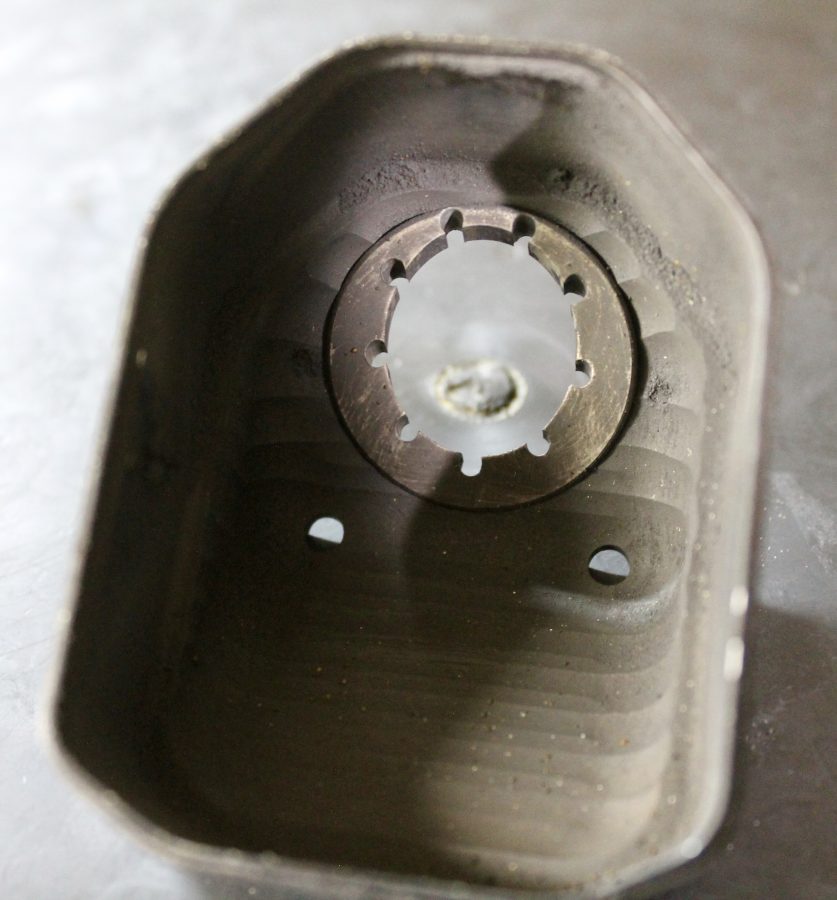
Baffles
Without oversimplifying the matter too much, the role of a silencer is to delay the pressure spike of the muzzle blast over time. What you’re hearing with the loud report of a shotgun blast is the high pressure gas behind the wad finally having an escape.
A silencer contains, disrupts, and safely vents that gas pressure over time to reduce the sound, which if you’ll remember from high school physics is just a function of air pressure. A simple tube on the end of the barrel is not really that effective as it does nothing to disrupt the gas flow. Baffle stacks of various shapes and sizes are used to disrupt that airflow.
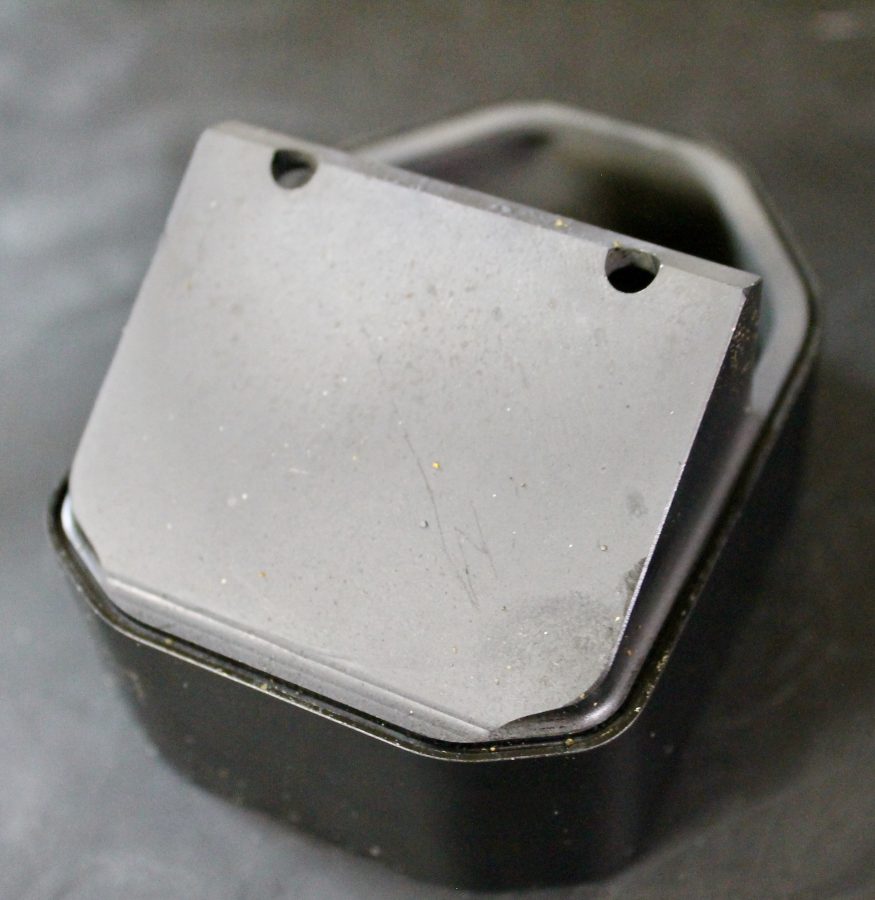
The protrusion of each baffle in the Salvo faces back towards the muzzle and serves to provide a disruptive wall to the incoming gasses. Each successive baffle continues to disrupt and tumble this gas flow until the end cap, where it safely vents to the atmosphere. I failed enough engineering classes that I never made it to fluid dynamics, so my opinion of the design is informed only by gut feel. And my gut says that SilencerCo did what they could within the confines of the system to disrupt gas flow as much as possible.

Inside the baffles, there are fairly apparent machining marks that can be explained away as intricate mechanisms for swirling and directing gas flow. Normally I wouldn’t feel that way, but each baffle seemed to be fairly well finished and the “machining marks” looked quite even and symmetrical.
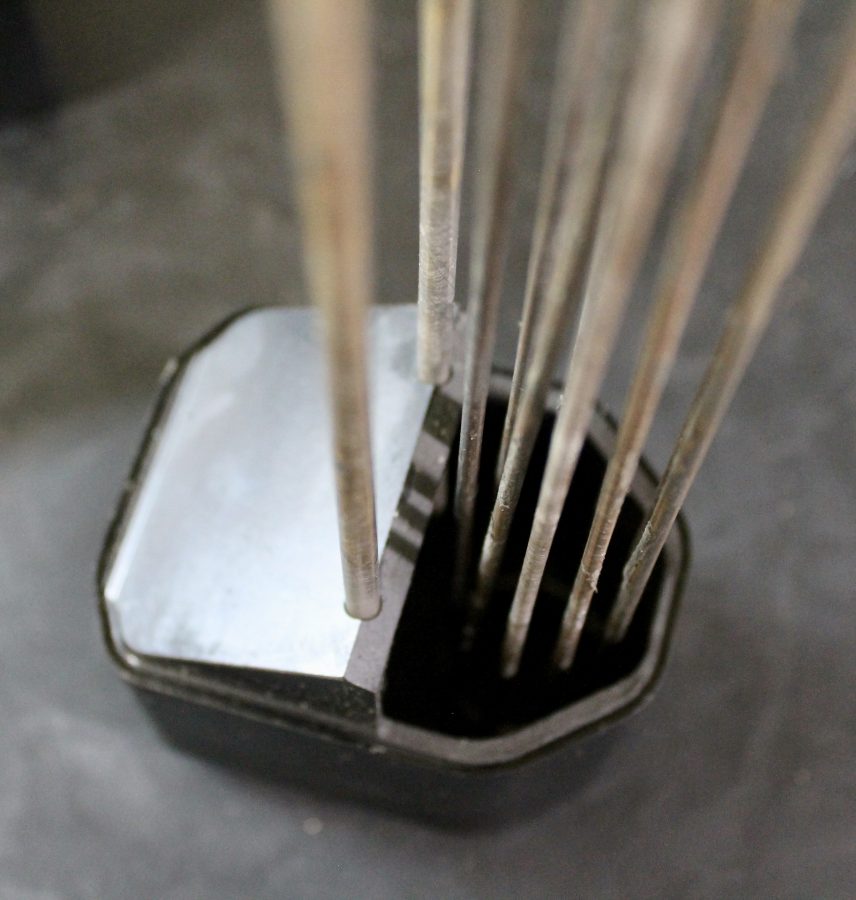
Assembly
Assembly starts at the end cap with the positioning of the threaded rods in the end cap, and then stacking of baffles from that point back. I found it easiest to count out the baffles that I needed and to get them sorted as the first three after the muzzle need to be full baffles followed by alternating half and full baffles until you reach the end cap.
Once you have most of the baffles in place, start inserting the smooth rods, keeping in mind that each one needs to slot into a groove in the full baffles, and firmly seats itself in the end cap. This is easily the most labor intensive part of the process, but my chuckleheaded attempts yielded the knowledge that you can’t really assemble the Salvo incorrectly.

12-Inch Configuration
The box comes with enough components for a 12-inch configuration. That box retails for $1440 not including chokes or other rod kits. At the time of this writing, Capitol Armory was running a special, selling it for $765 which leaves plenty of room for extra chokes and rod kits.
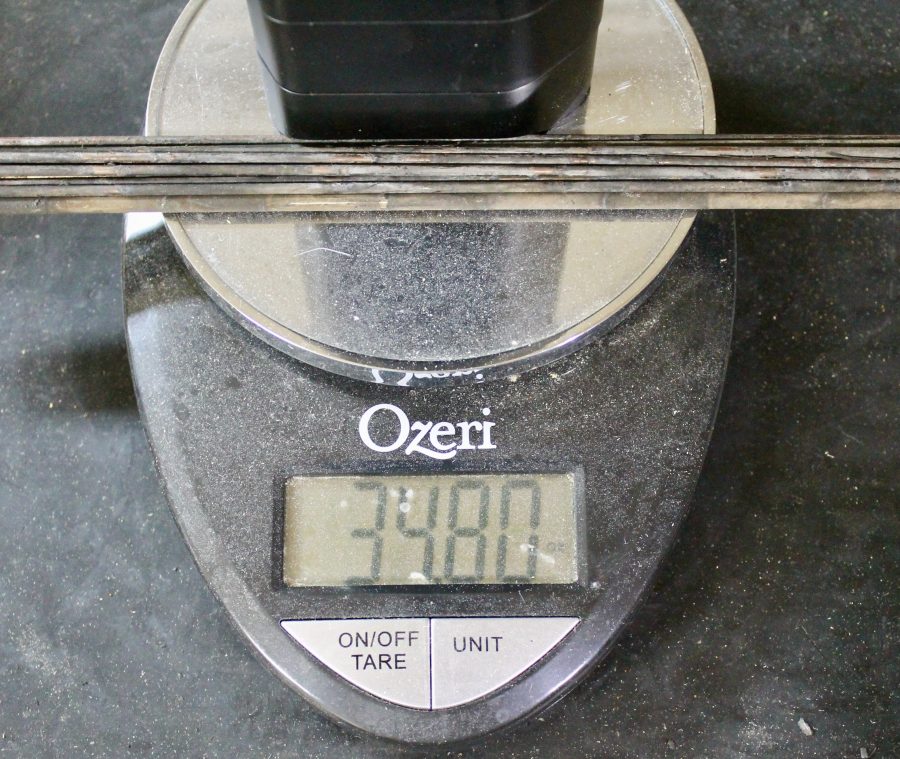
The longest configuration is, of course, the heaviest, weighing in at almost 35 oz on my scale. The advertised weight is 32 oz and I’m inclined to believe that’s right on the money for a new in box silencer. The pictures above should leave no doubt that my test model had an extra three ounces of accumulated carbon and lead fouling.
As you’d also expect, the 12-inch configuration is also the quietest of the four available configurations. Metering data has its own section here, but you can reliably expect the twelve-inch set-up to be hearing safe with all but the shortest barrels running the hottest loads.

10-Inch Configuration
Lopping two baffles off the stack shaves some weight, but ten inches of can hanging off the end is still ten inches of can hanging off the end.
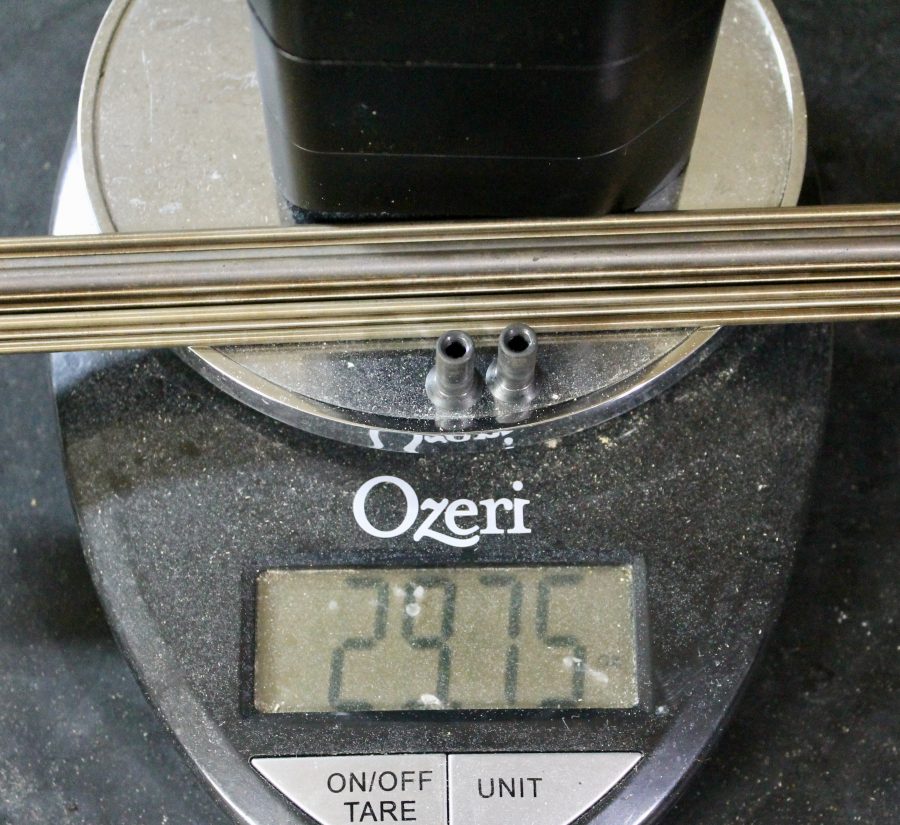
My scale showed that those two baffles staying home were worth five ounces which doesn’t sound like a ton, but it does represent a 14.5% weight reduction that brings the total weight under two pounds. I found it noticeable, but just barely.
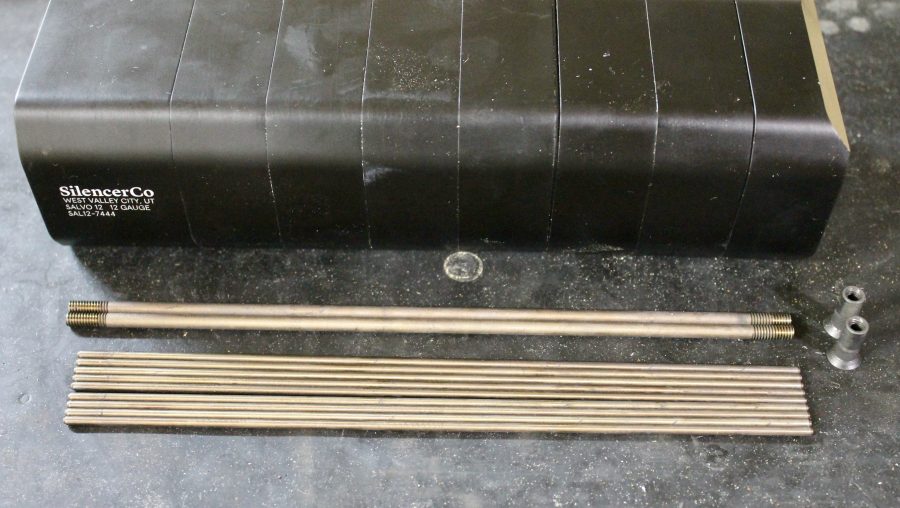
Eight-Inch Configuration
This is where the Salvo starts to remind you of your typical rifle silencer. At right around the length of most of the longer .30 caliber rifle cans on the market, it matches up pretty well with its sibling Specwar 7.62 which is right at nine inches long and weighs in at 24 oz.
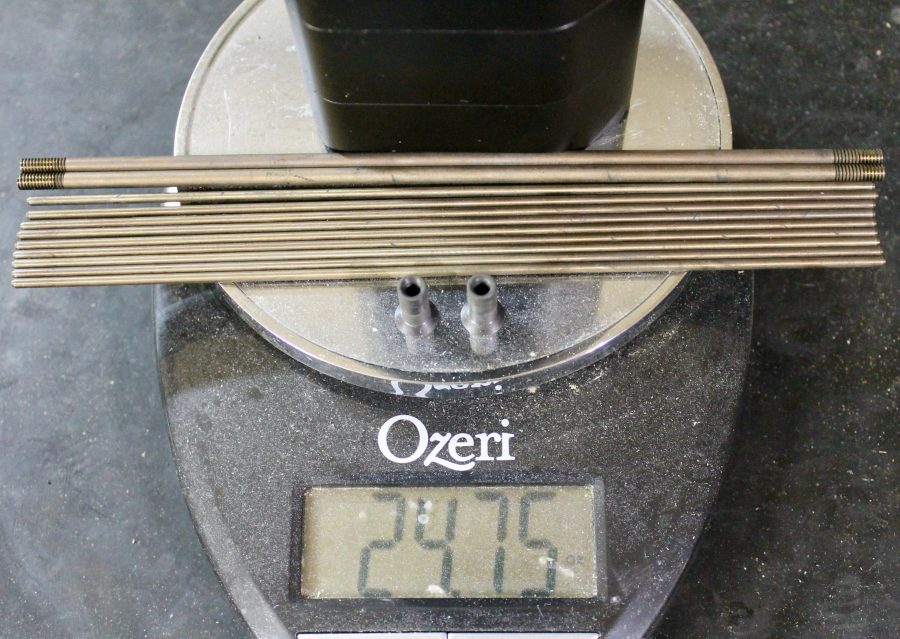
Lopping two more baffles off cuts the weight another five ounces (see a trend?) bringing the weight under twenty-five oz – right at a pound and a half. I found the eight inch configuration to be about the longest length that was feasible to run on a hunting length shotgun. The Stoeger M3500 I used for this test is the shorter barreled model at 26″. Adding a pound and half and eight inches to the end is about the longest I could go without giving my upper body a serious workout. It definitely has an effect on the swing and balance of the gun, but it’s tolerable.

Six-Inch Configuration
The six inch configuration is meant for those looking for minimal length, weight, and suppression. With just three full baffles and a half baffle between the muzzle and the end cap, it’s definitely the most ergonomic, but it’s still noticeable in the way it upsets the balance and ergonomics of your shotgun. After much time trying out the various lengths, I elected to use the six-inch set-up for a duck hunt down on the coast.
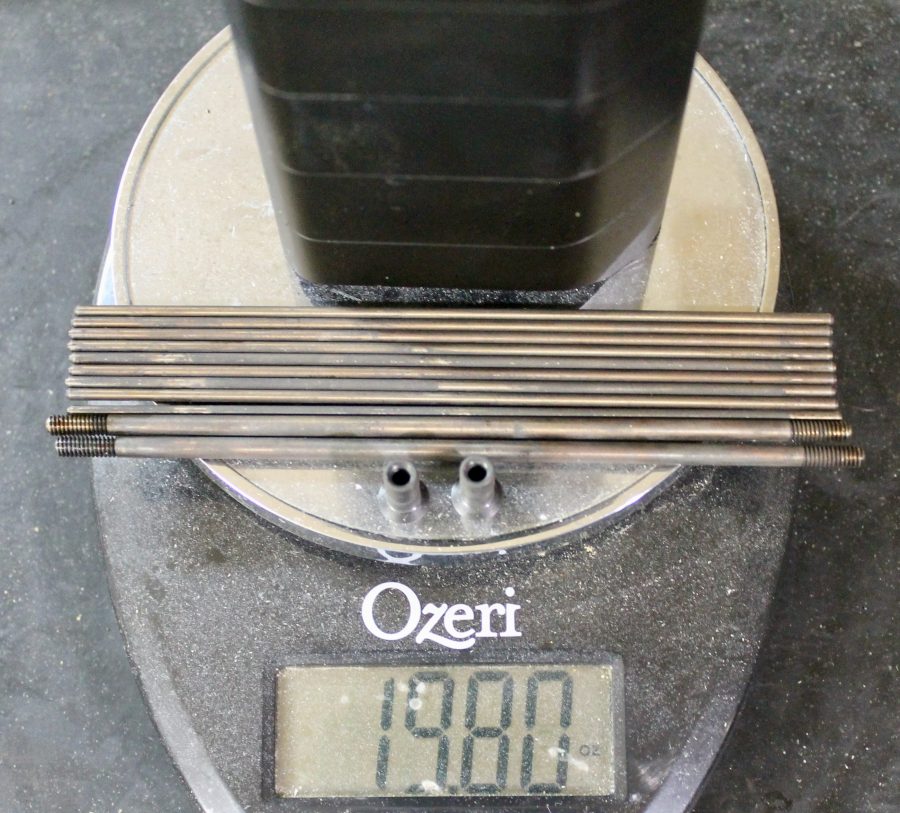
The six-inch configuration brings the total weight to a hair over a pound and a quarter.

Sound Metering
I don’t own sound metering equipment, nor do I claim to be a scientist. I leave that to the folks at Capitol Armory who a) own the equipment and b) are fairly scientific in their approach. The video below details their experience.
What I can tell you with my finely tuned microphones on the sides of my head: the longest configuration is the only one I’d consider “hearing safe.” And I wouldn’t call it that for an all-day shooting session. In the twelve-inch configuration, the Salvo brings the noise down to a tolerable level for nearby humans and dogs, which seems to be the point of the whole exercise.
The sound is a little hard to describe, but the closest I can come is, “A series of rubber bands snapping inside a big metal trash can.” Most people who shot it for the first time smiled, laughed, and shot some more. Watching the action in Capitol’s booth at the Texas Firearms Festival, that seemed to be a pretty common response.
In the shortest configuration, there’s almost no difference between suppressed and unsuppressed. I actually had a buddy duck hunting with the exact same shotgun (unsuppressed) and load as mine, and our guide said he couldn’t tell the difference between the sound of either shot. Our fellow hunters a few hundred yards away in another duck blind said the same thing.
Patterning
As the Salvo is marketed towards all shotgun users, one of the biggest questions I had how it affects pattern performance. To test this I took the aforementioned Stoeger 3500, a bunch of tools, and a bucket full of Federal Speed-Shok – 3″ 1-1/4 oz #2 Steel Shot to the range with a couple cans of paint and some Action Target IPSC torsos. I set up at a laser-measured 35 yards, and commenced shooting targets and taking pictures.
The first test was to compare the SilencerCo IC choke against the factory Stoeger IC choke.
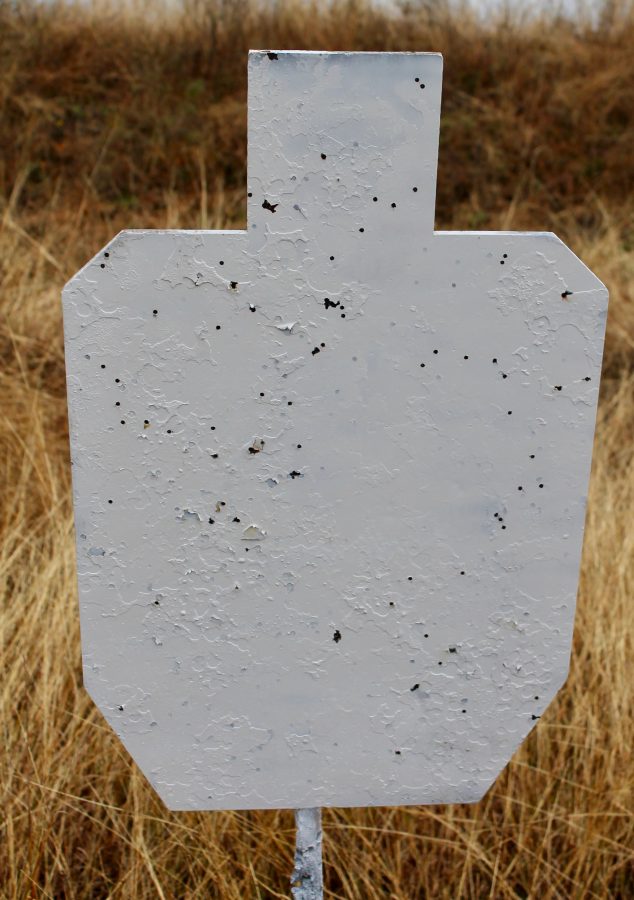
Across multiple targets during my testing with the Stoeger IC choke, I saw hit counts in the low nineties. With the SilencerCo improved cylinder choke, my pellet counts were typically in the neighborhood of the low seventies. This is certainly a bit more spread and would push me to suspect that the IC choke from SilencerCo something closer to cylinder. If you’re considering this for hunting, you might be better served by going with a tighter choke than you normally would.

Strapping the Salvo in the six-inch configuration dropped the hit count even further. I saw anything from forty to sixty hits on target with most of them clustered in the high fifties to low sixties. The target above has fifty eight hits and you can see that shot seems evenly dispersed and well distributed. That’s “duck coverage” at this distance, but just barely. Thankfully, this gave me the perfect excuse for why my hunting trip yielded only two ducks.
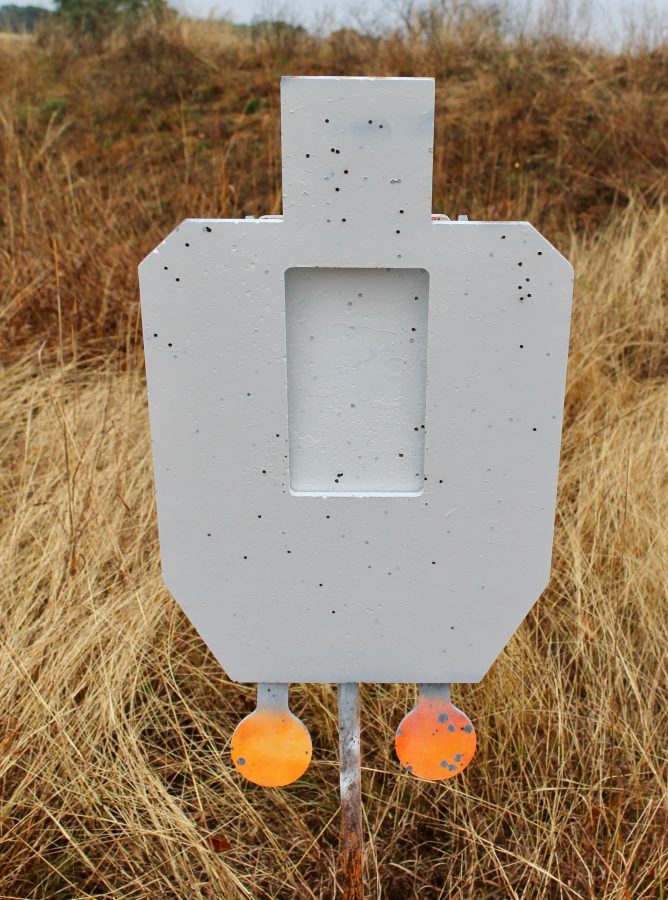
Moving to the eight-inch configuration, the maximum length I would consider for handling reasons, the shot spread opened up a great deal and yielded very consistent hit counts in the low forties. The target picture above is one of the most “covered” with forty-six hits. Coverage isn’t very consistent and would definitely be inadequate in my mind for duck hunting unless they were much, much closer.
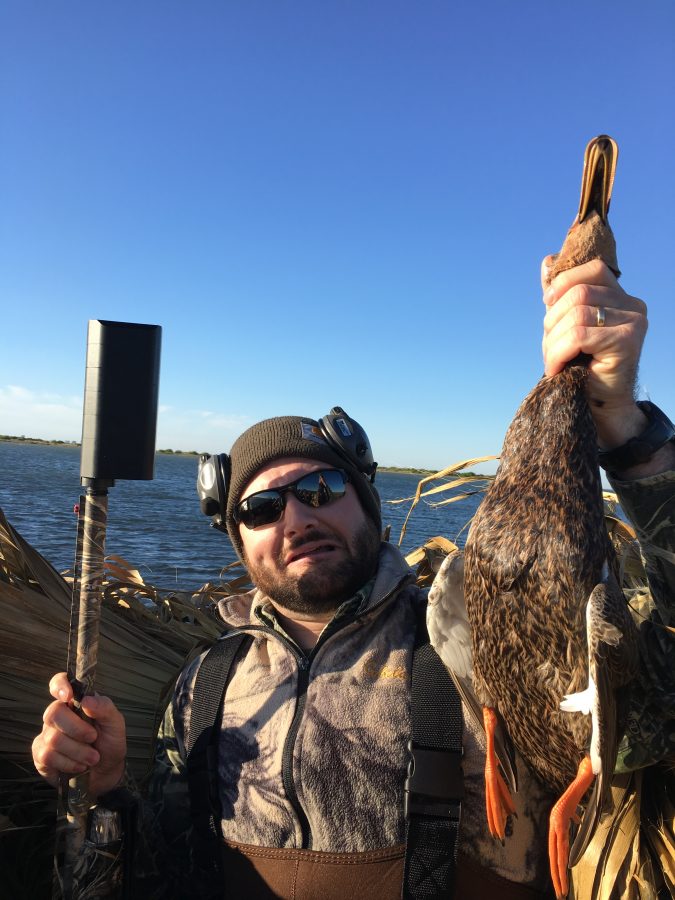
Handling
I set out to kill at least one duck with the Salvo strapped to the end and I managed to do just that with a passing overhead shot. I would estimate that it was about 25 yards above me. Our morning was otherwise a bust, with very few shooting opportunities, mostly high flying birds that refused to fall. Again, I blame the near-cylinder choke. With my stated goal over, I removed the Salvo at lunch time, reinstalled the Stoeger IC choke, and continued my weekend of hunting with muffs on.
The fact is that shooting a hunting shotgun is all about feel, balance, movement, swing, etc. Trap and skeet shooters can spend thousands and thousands of dollars to improve the fit, feel, and balance of their guns, and I have yet to see a single one toss a two-pound on the muzzle of their gun to improve their score. The only nice thing I can say about the Salvo on the end of a twenty-six inch shotgun barrel is that it breaks you of any notion of not following through on a shot. Inertia is like that.
At the hearing safe configuration of twelve inches, the Salvo turns your duck or dove gun into a fine range toy, great for impressing your friends. But try to hit anything on the move like a bird or a clay, and you’ll likely unscrew it in a hurry.
Where the Salvo’s weight and length start to fade away in terms of performance is when it’s strapped to the end of a minimum legal length (or shorter) shotgun. I’ve had the chance to handle and shoot a variety of pump action twelve gauges with eighteen inch barrels, and the Salvo at the end certainly makes it feel a little nose heavy, but it is tolerable, and the reduction in sound is welcomed.
For those that are hell-bent on having a shotgun for home defense but worry about the utter destruction of their hearing from firing a shotgun indoors, the Salvo definitely provides a solution to your problem. If you’re willing to do a bit more paperwork, the Salvo is rated down to a ten-inch barrel with 2-3/4″ shells. At the minimum SBS length, with a Salvo on the end, you have a hearing safe and fairly maneuverable scattergun.
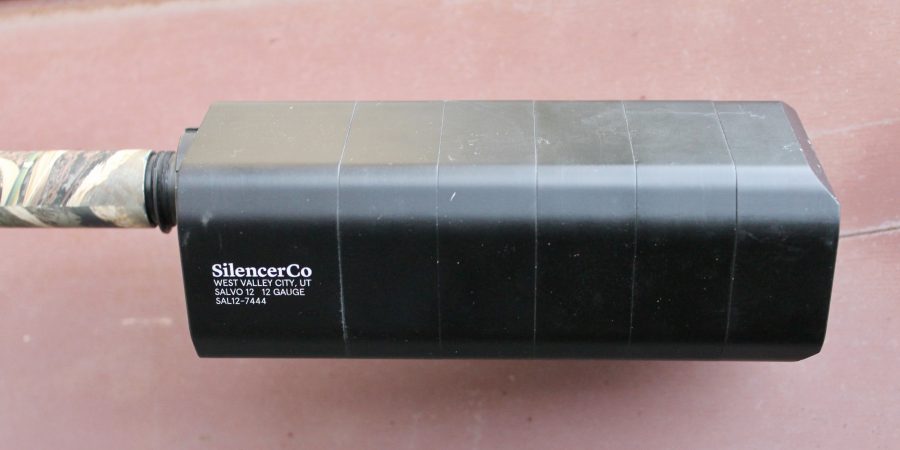
Specifications: SilencerCo Salvo Shotgun Suppressor
- Caliber: 12 Gauge
- Weight: 19.8 – 34.80 oz
- Length: 6.42 – 12.19 inches
- Diameter: 2.0″
- Full Auto Rated: No
- Color: Black
- Finish: Hard Coat Anodized
- Materials: 7075 T6 Aluminum & 17-4 Stainless Steel
- Warranty: Lifetime
- MSRP: $1440 (Real World: $765 from Capitol Armory)
- Additional Chokes: $90 w/ purchase of Salvo
- Choke Kit: – $220 w/ purchase of Salvo
- Rod Kit: $36 w/ purchase of Salvo
Ratings (out of fives stars)
Fit, Finish, Build Quality * * * * *
I’ve come to expect a high degree of quality in a SilencerCo product and the Salvo doesn’t disappointed. Even though this one had thousands of rounds downrange when I got it, it still looked quite nice on the exterior and the interior surfaces were free of machining defects or errors. Everything fit together well and all the accessories worked well together.
Sound Moderation * * * * *
There are precious few shotgun silencers out there in the world and the Salvo sets the bar for what can be done. In the twelve-inch configuration it’s hearing safe, albeit right on the edge with full house three-inch loads. At shorter configurations, it either teeters on the edge or is downright loud. If you’re looking to bring a shotgun down to hearing safe levels, the Salvo really needs to be in the longest configuration, full stop. Shorter set-ups will attenuate the sound some, but you still need earplugs.
Accuracy * * *
On this particular shotgun, the supplied Salvo IC choke performed about on the level with a cylinder choke. Short of trying various chokes on various shotguns, my experience was that you should consider a move up the choke scale for your intended purpose.
Handling * *
On a proper field shotgun with a 26″+ barrel, there’s no way to not notice the added weight, even the shortest configuration. At the longest configuration, the weight so severely hinders the balance of the gun as to render it as unusable for field duty. If you’re considering a Salvo for hunting, know that it will take plenty of practice to master the change to your gun’s handling.
For those considering this for the shortest legal barrel length possible, you’ll notice the weight at the end, but the reduction in sound will be worth it. If you’re willing to do some more paperwork and go the SBS route, you can go as short as 10″ and still safely use the Salvo. Doing so will result in a finely balanced gun that will serve you well as a home defense gun if that’s your preference.
Overall * * *
For hunting purposes, the Salvo is out. Too much weight on the end of your gun. Shorter home defense shotgun users need not worry themselves with minor changes in patterning As the Salvo is marketed at hunters, I have to review it as such, and it comes up short. It does its best work in a a ‘tactical’ shotgun role.



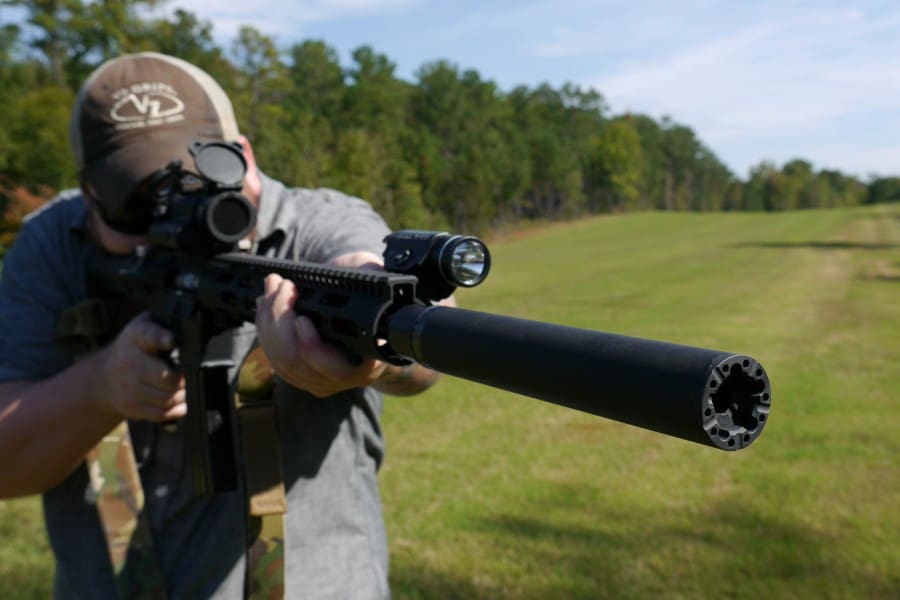
Given as combat shotguns are quite suitable for deer hunting (ghost rings or reflex sights give suitable aiming precision with slugs), I could see the Salvo getting some love for hunting in shotgun-only states or counties.
Not really. With slugs, it’s pretty loud.
I am practicing to shoot down.
ohh really 😨
I’ve shot these quite a bit myself. One of the things that is interesting is that with bird shot it provides a great deal of sound suppression, but with Buckshot it provides very little.
Lots of combat guns have no threaded barrel, problem #1. Just a basic cylinder bore in a thin walled barrel that is not designed to be threaded. Plus the idea of hanging a 32 oz, (or 2 pound) weight on those delicate factory threads does not give me a warm fuzzy feeling. My next question is the functionality with shotgun slugs and sabots?
Hopefully some day the issues can be resolved as a quiet shotgun would be great in those areas close to homes etc. A way to accomplish that without a 2 pound weight hanging off the end of the barrel would be great.
I see numerous short silencers on the market that are not hearing safe. am I missing something? Someone please tell me: What is the point of a silencer that is not hearing safe?
Silencers provide other benefits besides sound reduction, such as reductions in concussive muzzle blast, muzzle flash, and recoil. Even if a can isn’t “hearing safe,” the conditions in the shooter’s immediate vicinity are markedly improved with a suppressed firearm vs. a bare muzzle. In my experience a suppressed rifle, even one that’s not “hearing safe”, is more enjoyable to shoot.
For sure. Way more pleasant. Also, take for instance a 167 dB rifle shot and you’re wearing ear pro rated for a 30 dB reduction (which is fairly high). Now you’re at 137 dB to your ears, which isn’t too far under that 140 dB “hearing safe threshold.” Now also put a suppressor on the muzzle that reduces the gunshot volume by 30 dB and you’re really onto something.
That on a Serbu ‘Super-Shorty’ modified to take Saiga magazines would be interesting in a ‘flame-thrower’ kinda way…
I’ve used a Salvo to hunt dove several times now, and I have to say that, while it is heavy and quite a change, it is supremely satisfying to watch birds say “what the f#@& was that?!?”
So this handles 00 buckshot and slugs?
Hmm, I suppose you could pin the base-most part to a 12.5″ barrel and call it a non-SBS integrally suppressed barrel; with the full 12″ you’d still only be at 24.5″, so still at least within the realm of reason for home defense. Having it be variable length kinda puts a bit of damper on that sort of effort, though. And who wants to pay for 2 tax stamps? One is way more than bad enough.
Oh gimme a break. This contraption is a solution looking for a problem. Shotgun blasts arent that loud anyways, and who wants to hang an overpriced brick on their barrel? What a joke.
Who? Me…
What’s not to like about a suppressed shotgun? There are short barreled shotguns, many with high capacity 12 rounds up to 28 rounds using 2 3/4 rounds that are loud enough to cause low frequency hearing loss. There are those of that are trying to salvage what’s left of our hearing loss from the military. If you don’t want a suppressor, don’t buy one. It does much more than just ‘silence’ the weapon… If you knew anything you wouldn’t be so negative about it.
I don’t agree:
http://www.stevehuffphoto.com/2013/09/05/the-nikon-d800-and-the-holy-trinity-of-lenses-by-valerio-trigari/
Comments are closed.